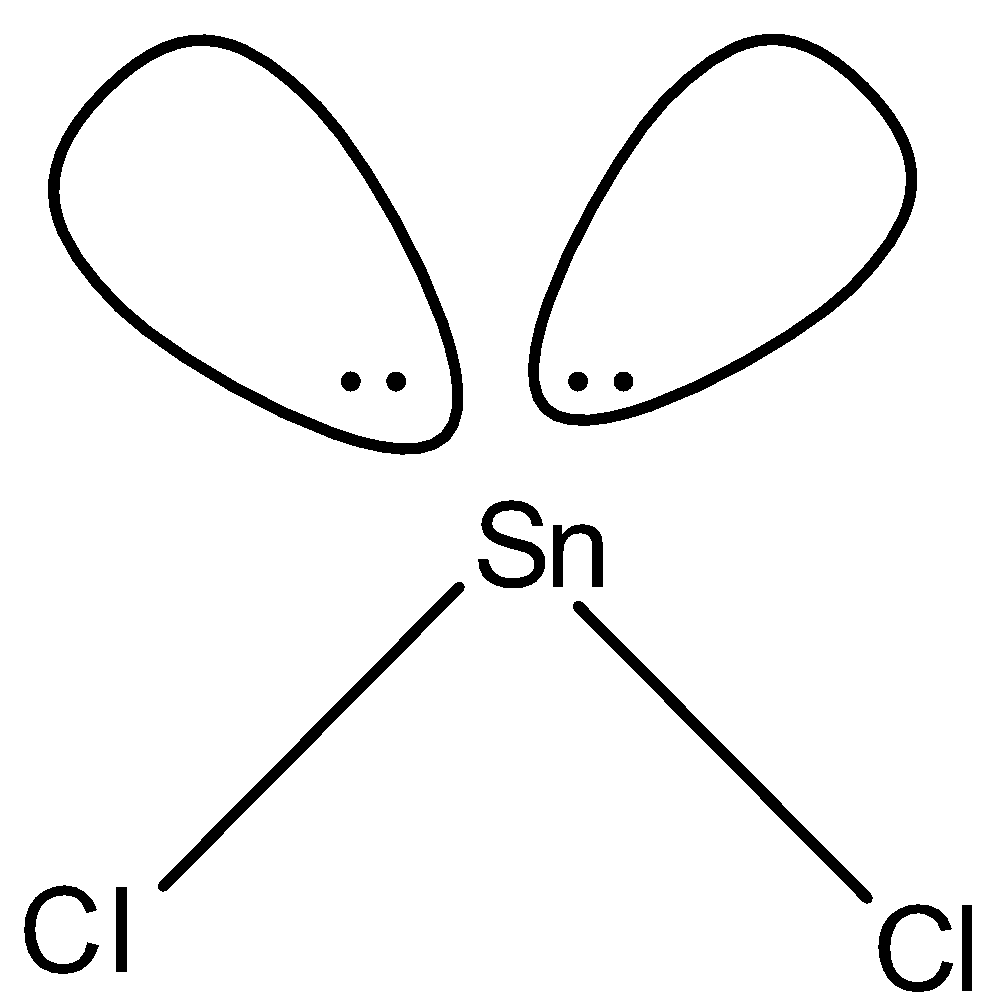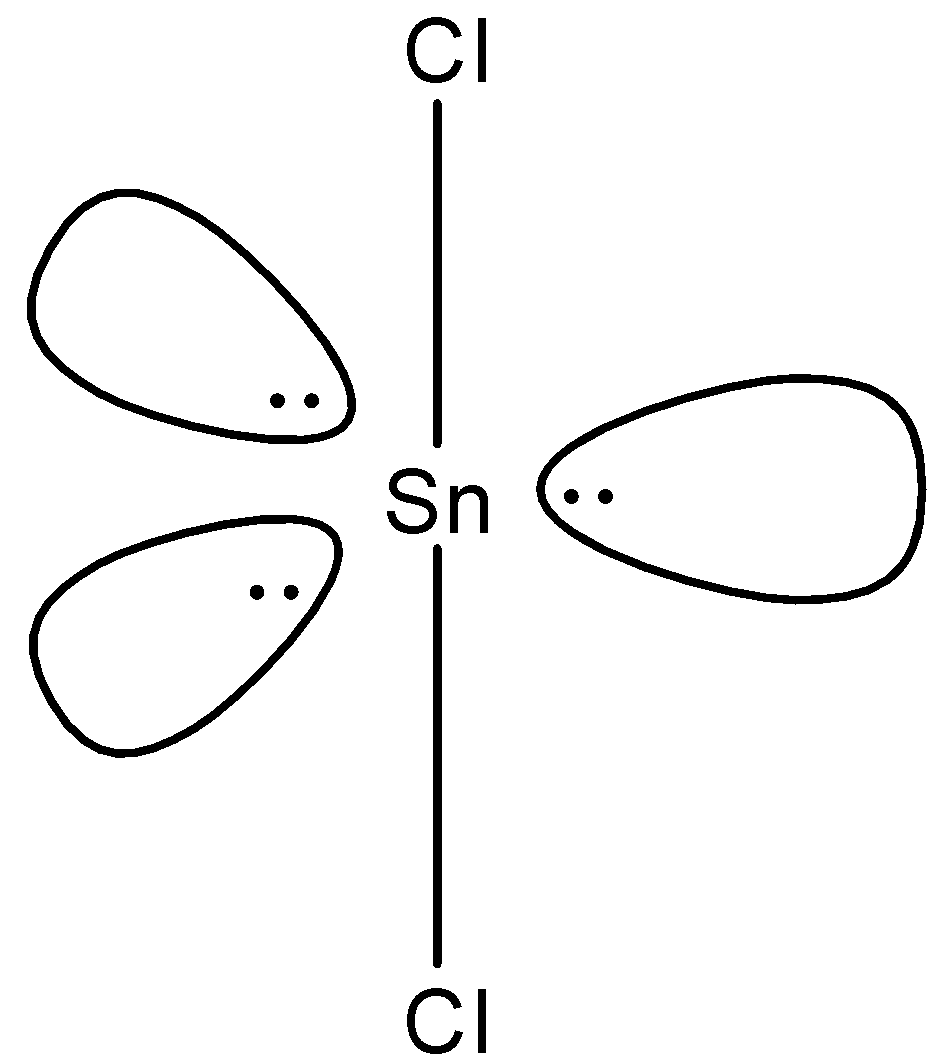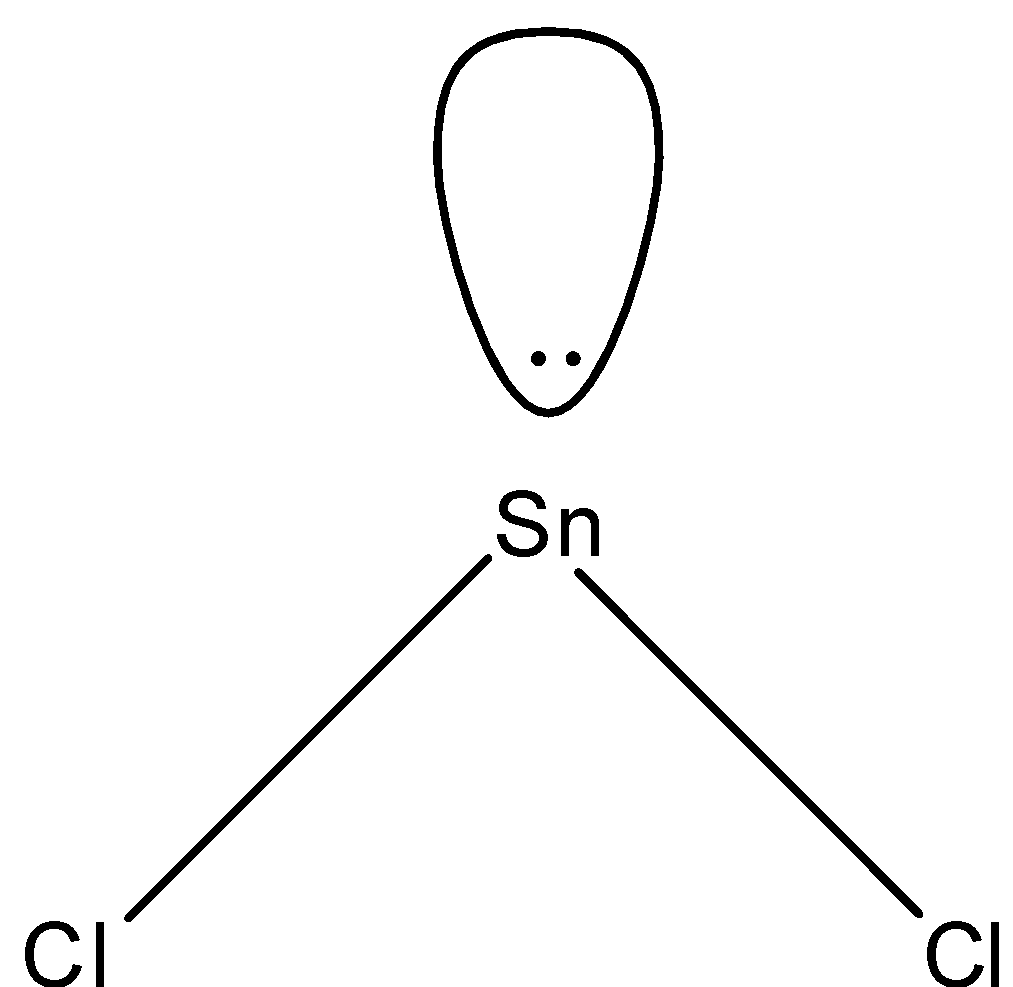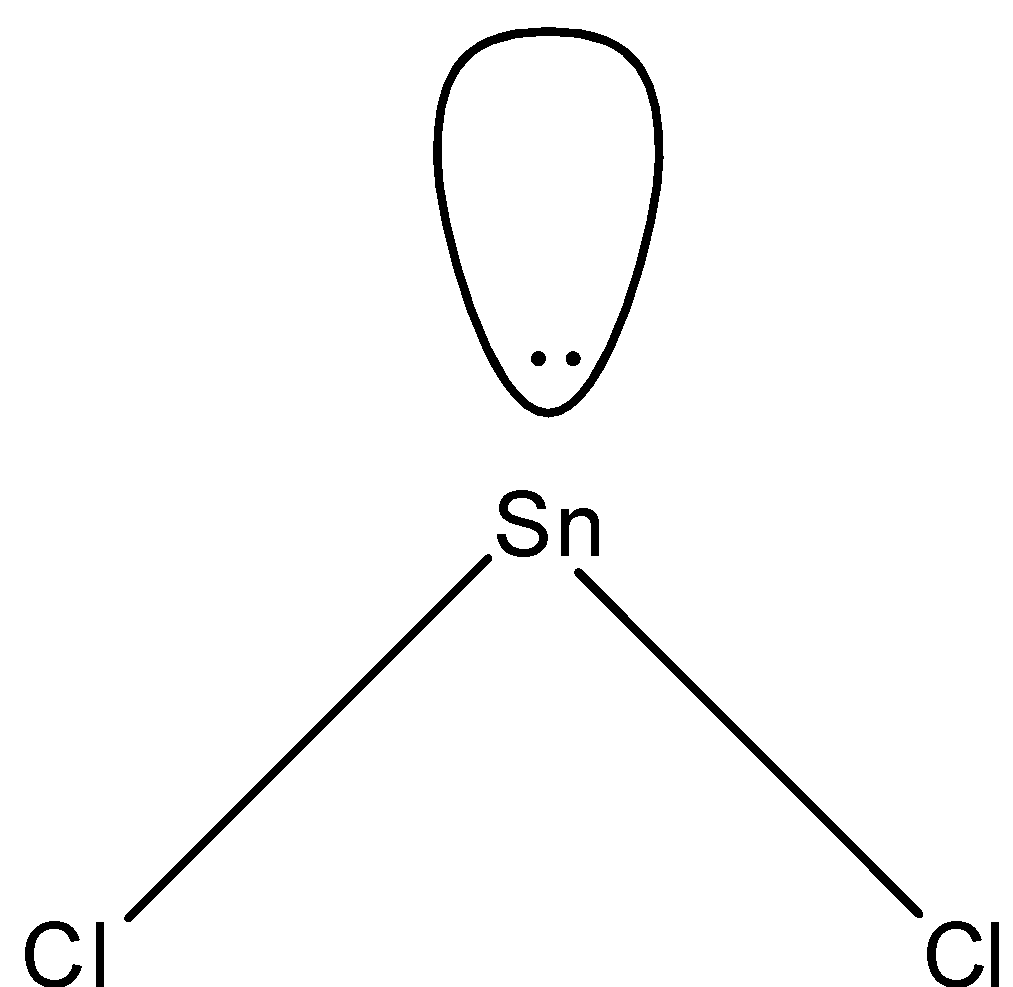
The atomic number of Sn is 50. The shape of gaseous $SnC{{l}_{2}}$ molecule is:
(a)- $Cl-Sn-Cl$
(b)-

(c)-

(d)-




Answer
558k+ views
Hint: The atomic number is 50 means there are 50 electrons in the atom and they will be filled according to the order: $\text{1s 2s 2p 3s 3p 4s 3d 4p 5s 4d 5p 6s 4f 5d 6p 7s 5f 6d 7p}$. The number of electrons in the last shell will decide the shape of the molecule. In $SnC{{l}_{2}}$, two electrons of tin will be shared by chlorine and the rest will be the lone pairs.
Complete Solution :
We are given the atomic number of Sn is 50. The atomic number is 50 means there are 50 electrons in the atom and they will be filled according to the order: $\text{1s 2s 2p 3s 3p 4s 3d 4p 5s 4d 5p 6s 4f 5d 6p 7s 5f 6d 7p}$. We know that the s can accommodate 2 electrons, p can accommodate 6 electrons, d can accommodate 10 electrons, and f can accommodate 14 electrons. So, the configuration will be:
$\text{1}{{\text{s}}^{2}}\text{ 2}{{\text{s}}^{2}}\text{ 2}{{\text{p}}^{6}}\text{ 3}{{\text{s}}^{2}}\text{ 3}{{\text{p}}^{6}}\text{ 4}{{\text{s}}^{2}}\text{ 3}{{\text{d}}^{10}}\text{ 4}{{\text{p}}^{6}}\text{ 5}{{\text{s}}^{2}}\text{ 4}{{\text{d}}^{10}}\text{ 5}{{\text{p}}^{2}}$
- So, the last orbital is 5s and 5p, hence there are 4 electrons in its outermost shell. Therefore, we can say that the Sn (tin) is the element of group 14 (carbon family).
- In $SnC{{l}_{2}}$, two electrons of tin will be shared by chlorine and the rest will be the lone pairs. Since we have 4 electrons in its outermost shell, 2 will be bonded with chlorine and there will be one lone pair and the shape of the molecule will be bent-shape. The structure is given below:

So, the correct answer is “Option D”.
Note: We know that in a compound having three atoms, one central atom and two same atoms joining the central atom, the shape is always linear but the $SnC{{l}_{2}}$ is bent-shape because of the presence of lone pair which causes the repulsion.
Complete Solution :
We are given the atomic number of Sn is 50. The atomic number is 50 means there are 50 electrons in the atom and they will be filled according to the order: $\text{1s 2s 2p 3s 3p 4s 3d 4p 5s 4d 5p 6s 4f 5d 6p 7s 5f 6d 7p}$. We know that the s can accommodate 2 electrons, p can accommodate 6 electrons, d can accommodate 10 electrons, and f can accommodate 14 electrons. So, the configuration will be:
$\text{1}{{\text{s}}^{2}}\text{ 2}{{\text{s}}^{2}}\text{ 2}{{\text{p}}^{6}}\text{ 3}{{\text{s}}^{2}}\text{ 3}{{\text{p}}^{6}}\text{ 4}{{\text{s}}^{2}}\text{ 3}{{\text{d}}^{10}}\text{ 4}{{\text{p}}^{6}}\text{ 5}{{\text{s}}^{2}}\text{ 4}{{\text{d}}^{10}}\text{ 5}{{\text{p}}^{2}}$
- So, the last orbital is 5s and 5p, hence there are 4 electrons in its outermost shell. Therefore, we can say that the Sn (tin) is the element of group 14 (carbon family).
- In $SnC{{l}_{2}}$, two electrons of tin will be shared by chlorine and the rest will be the lone pairs. Since we have 4 electrons in its outermost shell, 2 will be bonded with chlorine and there will be one lone pair and the shape of the molecule will be bent-shape. The structure is given below:

So, the correct answer is “Option D”.
Note: We know that in a compound having three atoms, one central atom and two same atoms joining the central atom, the shape is always linear but the $SnC{{l}_{2}}$ is bent-shape because of the presence of lone pair which causes the repulsion.
Recently Updated Pages
Why are manures considered better than fertilizers class 11 biology CBSE

Find the coordinates of the midpoint of the line segment class 11 maths CBSE

Distinguish between static friction limiting friction class 11 physics CBSE

The Chairman of the constituent Assembly was A Jawaharlal class 11 social science CBSE

The first National Commission on Labour NCL submitted class 11 social science CBSE

Number of all subshell of n + l 7 is A 4 B 5 C 6 D class 11 chemistry CBSE

Trending doubts
Differentiate between an exothermic and an endothermic class 11 chemistry CBSE

10 examples of friction in our daily life

One Metric ton is equal to kg A 10000 B 1000 C 100 class 11 physics CBSE

Difference Between Prokaryotic Cells and Eukaryotic Cells

1 Quintal is equal to a 110 kg b 10 kg c 100kg d 1000 class 11 physics CBSE

State the laws of reflection of light




